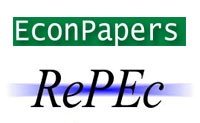The effects of financial development and tax on income inequality in Turkiye: The financial Kuznets curve hypothesis
DOI:
https://doi.org/10.55094/hoec.2173Anahtar Kelimeler:
Financial Kuznets Curve- Income Inequality- Financial Development- ARDL Bounds TestÖzet
One of the factors that ensure the peace of society in a country is the fair distribution of income in that country. With the access of individuals to financial resources, the level of income increases, and this increase makes income distribution an even more important issue. Financial development is an important factor that can prevent income inequality. Kuznets approach put forward by Kuznets (1955) has been named the financialKuznets curve (FKC) with the finding of Greenwood and Jovanovic (1990). According to their theoretical stipulations, an inverted-U relation between financial sector development and income inequality exists. The main purpose of this study is to investigate whether financial development and tax have an effect on income distribution in the Turkish economy between the period of 1995-2021. Longterm estimation via ARDL boundary test indicates that the variables are cointegrated. It is revealed that the FKC hypothesis is not valid in the selected period.
İndirmeler
Referanslar
ALTINER, A., BOZKURT, E., & TUREDI, S. (2022). The Relationship Between Income Inequality and Financial Development: Panel Data Analysis. Business and Economics Research Journal, 13(3), 349-366.
ANG, J. B. (2010). Finance and Inequality: The Case of India. Southern Economic Journal, 76(3), 738–761. http://www.jstor.org/stable/27751495
ARGUN, A. İ. (2017). Finansal Gelişme ve Gelir Eşitsizliği. Sosyal Bilimler Dergisi, (1), 61-74.
CAN G., KILIÇ, C., & UNZULE, K. (2022). Is Kuznets’ınverted-U Hypothesıs Valıd For Turkey?: Ardl Bounds Testıng Approach. Yönetim Bilimleri Dergisi, 20(43), 171-190.
ÇETIN, M. & ŞEKER, F. (2015). Finansal Gelişmenin Gelir Eşitsizliği Üzerindeki Etkisi: Türkiye Ekonomisi İçin Ampirik Bir Kanıt . International Anatolia Academic Online Journal Social Sciences Journal , 3(2) , 52-63 . Retrieved from https://dergipark.org.tr/tr/pub/iaaoj/issue/22090/422475
ÇIL YAVUZ, N. (2004). Durağanlığın Belirlenmesinde KPSS ve ADF Testleri: İMKB Ulusal-100 Endeksi ile Bir Uygulama . İstanbul Üniversitesi İktisat Fakültesi Mecmuası , 54 (1) , 239- . Retrieved from https://dergipark.org.tr/tr/pub/iuifm/issue/810/8792
DEMIRGIL, B. (2018). Vergilerin gelir dağilimi üzerindeki etkisi: Ampirik bir çalişma. Cumhuriyet Üniversitesi İktisadi ve İdari Bilimler Dergisi, 19(2), 118-131.
DESTEK, M. A., OKUMUŞ, İ., & MANGA, M. (2017). Türkiye’de finansal gelişim ve gelir dağılımı ilişkisi: Finansal kuznets eğrisi. Doğuş Üniversitesi Dergisi, 18(2), 153-165.
DOĞAN, B. (2018). The Financial Kuznets Curve: A case study of Argentina. The Empirical Economics Letters, 17(4), 527-536.
DOYTCH, N., ELHEDDAD, M., & HAMMOUDEH, S. (2023). The financial Kuznets curve of energy consumption: Global evidence. Energy Policy, 177, 113498.
DUMRUL, C. & S.Ç. İLKAY & Y. DUMRUL (2021), Finansal Kuznets Eğrisi Hipotezi: Yapısal Kırılmalı Eşbütünleşme Testleri ile Türk Ekonomisine İlişkin Ampirik Bir Analiz, Sosyoekonomi, 29(50), 337-359.
ERSEZER D. (2006). Gelir Dağılımı Politikası ve Araçları. Fırat Üniversitesi Sosyal Bilimler Dergisi, 16(1), 255 - 268.
GREENWOOD, J., & JOVANOVIC, B. (1990). Financial development, growth, and the distribution of income. Journal of political Economy, 98(5, Part 1), 1076-1107.
KANBEROĞLU, Z., & ARVAS, M. (2014). Finansal kalkınma ve gelir eşitsizliği: Türkiye örneği, 1980- 2012. Sosyoekonomi, 21(21).
KHATATBEH, I. N., & MOOSA, I. A. (2023). Financialisation and income inequality: An investigation of the financial Kuznets curve hypothesis among developed and developing countries. Heliyon, 9(4).
KUZNETS, S. (1955). Economic Growth and Income Inequality. The American Economic Review, 45(1), 1–28. http://www.jstor.org/stable/1811581
KWIATKOWSKI, D., PHILLIPS, P. C., SCHMIDT, P., & SHIN, Y. (1992). Testing the null hypothesis of stationarity against the alternative of a unit root: How sure are we that economic time series have a unit root?. Journal of econometrics, 54(1-3), 159-178.
ÖZBEK, S. (2022). Finansal Kuznets Eğrisi Hipotezinin Geçerliliği: Türkiye Ekonomisi Üzerine Kısa Ve Uzun Dönemli Zaman Serisi Bulguları. Dokuz Eylül Üniversitesi İşletme Fakültesi Dergisi, 23(1), 81-97.
PATA, U. K. (2020). Finansal Gelişmenin Gelir Eşitsizliği Üzerindeki Etkileri: Finansal Kuznets Eğrisi Hipotezi Türkiye İçin Geçerli mi? . Atatürk Üniversitesi İktisadi ve İdari Bilimler Dergisi , 34 (3) , 809-828 . DOI: 10.16951/atauniiibd.648695
PESARAN, M. H., SHIN, Y., & SMITH, R. J. (2001). Bounds Testing Approaches to the Analysis of Level Relationships. Journal of Applied Econometrics, 16(3), 289–326. http://www.jstor.org/stable/2678547
SARI R (2003). Gelir Dağılımında Eğitim Faktörü: Kentsel Bazda Bir Örnek. Ankara Üniversitesi SBF Dergisi, 58(2), 177 - 189.
SHAHBAZ, M., LOGANATHAN, N., TIWARI, A. K., & SHERAFATIAN-JAHROMI, R. (2015). Financial Development and Income Inequality: Is There Any Financial Kuznets Curve in Iran? Social Indicators Research, 124(2), 357–382. http://www.jstor.org/stable/24721747
SHAHBAZ, MUHAMMAD & ISLAM, FARIDUL, (2011). “Financial development and income inequality in Pakistan: An application of ARDL approach,” MPRA Paper 28222, University Library of Munich, Germany.
SOLT, F. (2016). “The standardized world income inequality database.” Social science quarterly 97.5: 1267-1281.
TAN, H. B., & LAW, S. H. (2012). Nonlinear dynamics of the finance-inequality nexus in developing countries. The Journal of Economic Inequality, 10, 551-563.
WANG, L. M., WU, X. L., & CHU, N. C. (2023). Financial development, technological innovation and urban-rural income gap: Time series evidence from China. Plos one, 18(2), e0279246.
YÜCE, M. (2002). Türkiye’de gelir dağılımı bozukluğunun izlenen kamu gelir ve harcama politikaları ile bağlantısı. Bilig Türk Dünyası Sosyal Bilimler Dergisi, 23(s 1).
İndir
Yayınlanmış
Nasıl Atıf Yapılır
Sayı
Bölüm
Lisans
Telif Hakkı (c) 2023 Holistence Publications

Bu çalışma Creative Commons Attribution 4.0 International License ile lisanslanmıştır.
Yazarlar, makale Journal of Economics'te yayınlanmak üzere kabul edildiğinde .makalenin içeriğindeki tüm telif haklarını, Holistence Publications'a devrederler. Yazarlar, patent hakları gibi telif hakkı dışındaki tüm mülkiyet haklarını saklı tutar.
Bu makalede yazar olarak listelenen herkes çalışmaya önemli, doğrudan, entelektüel katkılar yapmış olmalı ve bunun için kamu sorumluluğu almalıdır.
Bu makale daha once yayınlanmamış ve başka dergilerde yayınlanmak üzere gönderilmemiştir.
















